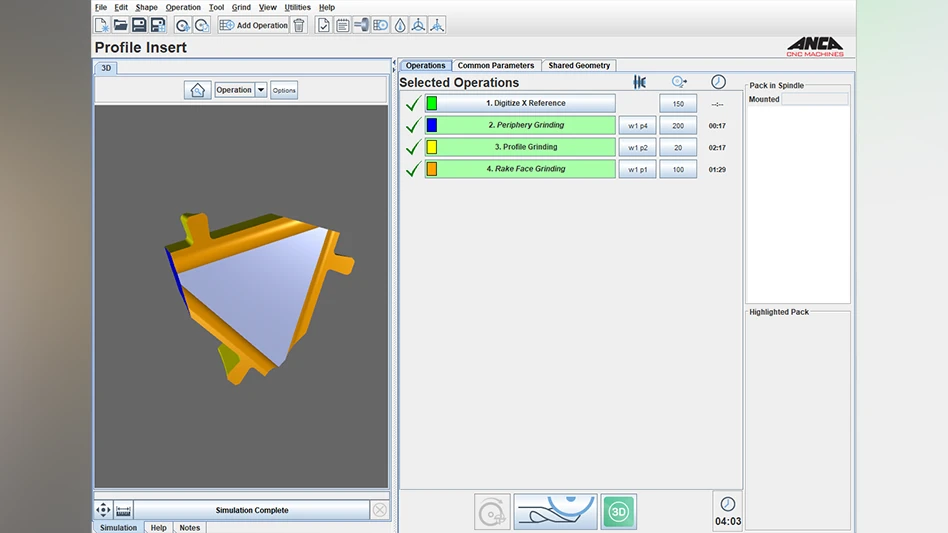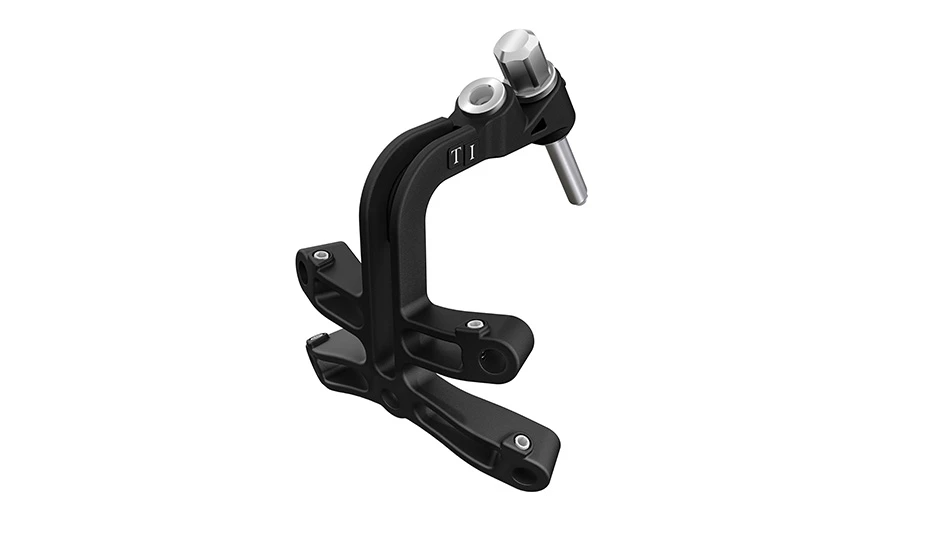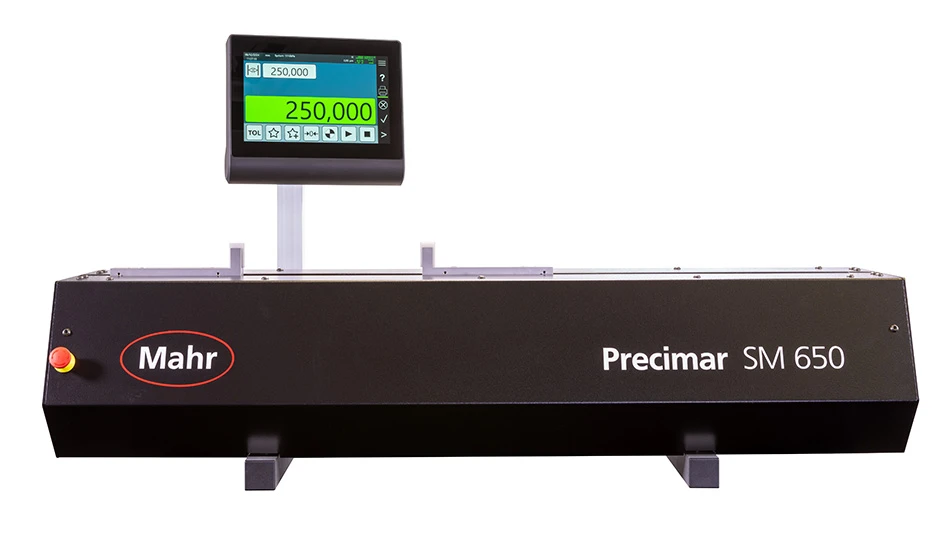 With so many variables affecting the final product of every machining operation, how do you know when something is not quite right? In addition, how do you identify exactly what it is? What, if any, answers lie in the chips?
With so many variables affecting the final product of every machining operation, how do you know when something is not quite right? In addition, how do you identify exactly what it is? What, if any, answers lie in the chips?
As it turns out (and as any seasoned machinist knows), the chips tell you some very important information. Moreover, all you need is a working pair of eyes and knowledge of the basics.
Machining 101
According to Tim Elfreich, sales manager and long-time technical support point man, the chips you generate depend on four fundamental factors. Affecting the size and the curl of the chip are:
- the tool you use
- the toolpath you run
- the speeds and feeds you apply to the cutter
- the type of material you are cutting
“These four factors will influence what you can expect from the chip,” Elfreich says. “Ideally, you want to get a chip in the shape of a 6 or a 9 with a nice curl. You learn that in Machining 101. Of course, that is good for the textbook, but depending on these other factors; it does not necessarily mean that the chip is going to look like that.”
“It works like a snow plow,” says IMCO Vice President Matt Osburn. “You know how the snow kind of curls up?”
The chip begins to form, Elfreich explains, as the cutting edge of the tool enters the material. At that moment, the material immediately ahead of the cutting edge deforms. This is called the plasticization phase; the material deforms as the cutting edge goes in and through. As the cutter pushes out the cut-away material, it curls back on itself naturally. This is what occurs in most, but not all, materials.
“To get a good chip,” Osburn says, “you have to select the tool that has not only the proper number of flutes, but the proper flute shape to generate a good curled chip.”
Elfreich states that, when IMCO designs a tool, the goal is to create chips with that 6 or 9 shape using a reasonable, traditional toolpath, which he defines as about half the tool diameter in the radial cut and equal to the diameter in the axial cut of a peripheral toolpath.
However, the shape of the chip is not the only performance indicator. As you will see, the color of the chips as they evacuate gives you critical information as well.
So, let us look at how those other factors affect your chips, starting with the tool itself. Tool factors include not only the flute design and spacing, but also the coating and cutting-edge integrity.
 1. The Tool
1. The Tool
There are three aspects to consider as you choose your tool:
a) the substrate
b) the design and geometry of the tool
c) the coating
a. The Substrate
The substrate, in large part, determines how much heat your tool can tolerate in the cutting zone. Carbide end mills are better than steel cutters at tolerating higher temperatures, explains Steve Avers, application support team leader and in-house test wrangler. Moreover, this is where the chip color comes in.
Because carbide is less heat-sensitive, you can run faster and hotter with most materials. Therefore, the chips coming away from the cutting zone should appear blue. However, if you are using high-speed steel cutters, in most materials the chips should be an amber color.
“Carbide tolerates high temperatures better, so you want to push it more to the blue hue,” Avers remarks. “That tells you are getting more heat into the chip, which is done by beating it faster and pushing it harder. That is what you want anyway; the faster you get the stuff off, the better. So you want a blue chip.
“However, with stainless steels,” he says, “when you are cutting stainless steels, you want more of a brown, amber to brown. In stainless steels, you do not usually go to a blue. In addition, if it is a high-speed steel cutter, you want chips to stay an amber color, not blue. If they turn blue, the heat is too great at the end mill. You will start getting built-up on the edge and that tool will not last very long.”
b. The Design and Geometry of the Tool
Everything about the tool and its design comes down to one thing: the material you need to cut.
“The way the flute is designed – the cutting edge of the flute – affects the way the chip is created,” Elfreich says. “And the flute shape differs based on the type of material you are cutting. Different materials create different types of chips.
Flutes
“We apply a type of mill to a particular application, the way we flute the tools and so on. For example, streakers, designed for aluminum, will cut other materials as well, but its focus is on aluminum and that type of material. Likewise, the Pow-R-Feed is a nice design for cutting a wide range of steels – not gummy materials, but a wide range of steels. This is why IMCO focuses on application-oriented, high-performance products versus general-purpose, one-size-fits-all tools.”
Osburn adds, “streakers is an extreme example of cutting a very easily machined material – aluminum. You are taking such aggressive cuts in it that you can easily clog the flutes. Therefore, you design it with a geometry that allows for very large chips. However, when you machine hardened materials you cannot cut aggressively, you take lighter cuts and get very small chips. So you tailor the flute geometry to handle a light chip and give it more flutes like an Omega-6.”
Avers breaks it down further: “Tools you use in aluminum and other soft materials are generally two- or three-flute end mills. In softer materials, your chip will be larger and come away from the workpiece easier, so it has to have quick evacuation. In aluminum and other soft material, you would not want to use a six-flute end mill – the flutes are too close together and do not leave enough room for chip evacuation.”
.jpg) Cutting edges
Cutting edges
Of course, the condition of the cutting edges will affect the chips generated. Recommendations are to keep an eye on the edges of the chips, so you know when you are losing shearing efficiency.
“When you put a fresh tool in there, it is very sharp,” Osburn says. “The chip edges themselves look crisp. However, as the tool gets dull, the chips are rough along the edges. The chip edges look torn off instead of cut off.”
Avers compares it to cutting with scissors. “When you cut a piece of paper, if it is a nice sharp pair of scissors you get that nice crisp edge. If the scissors are dull, you get fuzziness at the edge where the fibers were pulled instead of cleanly cut.”
Another thing to watch: chip length.
“With a sharp tool, the chip should go the full length of the flute,” Avers comments. “If you get a notch in the flute, the chip will only go up as far as that notch. Sometimes softer metals will adhere to the end mill and start to build up and then break off. So, if chips start coming out smaller, you know you have a notch in a flute or you are getting built-up edge, which will probably break off soon and leave a notch in the flute.”
In fact, Avers says, that is the design of chipbreaker tools. The flutes have regularly spaced notches to ensure smaller chips, because they are easier to evacuate. “Unless you are using a chipbreaker,” he says, “your chips should remain the same length.
“So when your end mill starts getting dull or the flutes have a notch, that is what happens – your chips get smaller, the curls are smaller and the colors change. There is a lot of variation you can easily see.”
Evacuation
What if your chips are coming out too long…or not coming out at all?
According to Elfreich, long chips are typically a drilling-related problem, when longer chips do not evacuate and they pile up in the cutting zone. This problem, called bird’s nesting, results in the tool cutting the same chips repeatedly, another problem called re-cutting.
“Re-cutting chips is always a bad thing,” Elfreich says.
In a milling operation, the tool continues to cut the long chips as long as they are in the cutting zone. In addition, the more you cut them, the faster the cutting tool wears out. That is especially true in carbon steel, Avers comments, because the chip is now work-hardened from the cutting-zone heat. It is now harder than the original workpiece.
“That is going to start scratching the workpiece when you are whipping it around in there,” Osburn adds, and the buildup will notch the cutting edge.
With chips, they say, smaller is better. Smaller chips are easier to manage and easier to flush out with coolant or an air blast. According to Avers, that is what makes chipbreakers a good choice when pocketing and slotting and when coolant or air pressure is limited, such as on open-bed machining centers, common with older, lower horsepower machines.
With milling, Avers says, the chips typically do not get long; they just do not go anywhere. “When they pack up in the flutes of your end mill, the material will do one of two things. It will build up on the cutting edge and eventually break off, taking with it the part of the end mill it is attached to, creating a notch.
“Or, it will build up on the cutting edge so your end mill no longer cuts efficiently. You will not get a crisp, sharp cut anymore when you are pushing the material, which can create burs on the top of the material. And it is going to shorten the tool life dramatically.”
 |
c. The Coating
Once optimization of the substrate and geometry are complete, Elfreich conveys, you can choose the tool coating. That choice, like the number of flutes you need, depends on the material you are going to cut.
“When you have one piece of metal – a carbide – rotating into another piece of metal – the work material – it creates a lot of friction and a lot of heat. The harder or faster you push the end mill, the more there is generation of heat. Harder materials generate more heat. Therefore, when you look at the material and how fast you can push it, you look for a coating that can handle the heat you can expect to generate.
“The coating provides two things: hot hardness, a measure of how well it resists the heat generated in a particular cut and lubricity or coefficient of friction. Hot hardness tells you how quickly or at what temperature the coating starts to break down and, therefore, how long it can maintain the integrity of the cutting edge. If the integrity of the cutting edge breaks down, you are not going to generate many good chips. The tool starts chipping or it will break.”
For chip formation, however, Elfreich says the coating is there mostly for lubricity – getting the chip out of the cutting zone. A tool’s lubricity is its coefficient of friction; the lower the coefficient of friction, the more lubricious the coating. The current concept is that higher lubricity helps the chip slide off the tool quickly, preventing buildup and removing cutting-generated heat.
In addition, where heat is an issue, the color is key, as Osburn explains: “When you are machining, you want that heat to go into the chip, not in the piece you are machining. Therefore, you watch the color of the chips. That tells you how hot it is getting at the spindle. When it gets too hot, the chip wants to meld and stick to the tool. That is built-up edge. Therefore, you add certain coatings to add lubricity, which reduces the amount of heat reaching the tool. The heat has to go somewhere, so it remains in the chip. The added lubricity makes it easier to get the chip out of the cutting zone, so the heat goes away with the chip and stays away. That is why, in most applications, the coating will extend the life of the tool.”
Avers offers an example. “If you are cutting medium carbon steel, a 1018 or something like that, it tends to warp easily so you want to get as much heat as you can into the chip. Here is why: if you allow the cutter to slow down, the heat builds up in the piece you are cutting, which will warp your part – which is now junk. So you want to have all your heat into the chip as much as possible.”
However, there are a few things to watch for with coatings, Avers states, such as staying away from AlTiN coatings when you are cutting in aluminum, because aluminum will adhere to the coating. However, he says, combinations like that are rare.
.jpg) 2. The Toolpath you run
2. The Toolpath you run
The thickness of the chip should match your chipload. The toolpath determines the thickness of the chips. The deeper you run but the lighter on the stepover, Elfreich comments, the thinner the chips, the better they curl. He demonstrates with chips of varying thicknesses and shapes.
“These chips have a curl but the chips are not really thick enough, based on the amount of stepover we are running, to bring them over into that 6 or that 9,” he says. “It is almost like a C.”
If you program the machine for a 0.003" chip load, Avers mentions, a chip from that operation should be within 0.0003" to 0.0005" of the thickness programmed. Most of the time, it is easy to see if it is within that range. If it is not, Osburn adds, it means the speeds and feeds are off.
3. The Speeds and Feeds you use
“Let us say Avers is the foreman of the factory and he is walking by a machining operation working with mild steel,” Osburn says. “He picks up some chips and looks at them. He can probably tell if the chip is too thick – which means they are running too hard – or too thin – which means they are not running hard enough.”
“Or,” Avers remarks, “if a machining operation seems to be taking forever and the programmer says it is programmed for a 0.005" chip load, but the chips are only 0.002" to 0.0025", the operator is not pushing it like he is supposed to. It will change the color of the chip, too. A lighter chip will have a lighter color.”
Likewise, if there is too much heat in the tool or the coating, that is where the type of tool you use, the toolpath and the speeds and feeds you run all come into play.
All agreed that in tool steels (carbon steels), if the chips are black, it is not a good thing.
“When the chips are coming out a real, real dark black,” Avers states, “it usually means you are generating a lot of heat. You obviously have a lot of heat going out in the chips, but you are probably generating too much heat. You should be getting a tone of blue, even if it is getting into a darker blue.”
4. The Material
The metallurgical properties of the material affect the ease of making the chip, the curl, the size of the chip, and more.
Elfreich says that, with some materials, whether they are stainless steel or aluminum, “They kind of want to stay there. In addition, if the chips do not evacuate very well, then forget about built-up edge. It is just packing in between two flutes. And when you cannot form your chip, it clogs the tool and the tool will snap in two.”
“Aluminum is very soft and curls very easily,” Elfreich remarks. “The down side of aluminum is that it has a fairly low melting point. Therefore, it has a tendency to adhere to the cutting edge. That is where the way you design your tool comes into play.”
On the other hand, Avers says, most carbon steels and tool steels do not have those gummy properties. “A low-carbon steel would be a 1018; medium-carbon steel would be a 4140: the metallurgical properties of both materials allow them to create a nice curl.”
 |
With most other steels, from aluminum to nickel- and chrome-based alloys, the chip tends to curl. Moreover, since about 90% of everything machined is a steel, Osburn says, that covers a lot of ground. Outside the steels range, aluminum lies at the soft-materials end of the materials spectrum. In fact, some of the softer materials do not form chips at all. Cast iron and cast steel and other softer materials actually flake. Nonmetals, such as plastics and graphite/carbon, also flake or powder when cut.
“The material that comes off is technically a chip,” Elfreich remarks, “but physically it is in the form of a powder.”
At the opposite (nasty-hard) end of the spectrum lie the exotics and alloys, such as nickel- and cobalt-based alloys used in aerospace applications and titanium sourced for aerospace and medical parts.
Heat, material, cutting edges, speed, feed, coating, geometries, flutes, coolant…tweaking one creates changes in some or all of the others. With milling operations, they are constantly interacting and when things go awry, the clues are often right there in the chips. In addition, even with today’s precision machining centers, smart operators know that nothing can take the place of experience and a sharp set of eyes.
Watch IMCO tooling in action at bit.ly/wnjUGJ.
IMCO Carbide Tool
Perrysburg, OH
imcousa.com

Explore the January February 2012 Issue
Check out more from this issue and find your next story to read.
Latest from Today's Medical Developments
- Arcline to sell Medical Manufacturing Technologies to Perimeter Solutions
- Decline in German machine tool orders bottoming out
- Analysis, trends, and forecasts for the future of additive manufacturing
- BlueForge Alliance Webinar Series Part III: Integrate Nationally, Catalyze Locally
- Robot orders accelerate in Q3
- Pro Shrink TubeChiller makes shrink-fit tool holding safer, easier
- Revolutionizing biocompatibility: The role of amnion in next-generation medical devices
- #56 Lunch + Learn Podcast with Techman Robot + AMET Inc.





